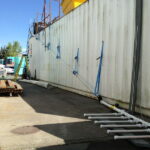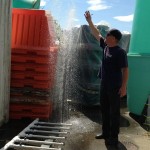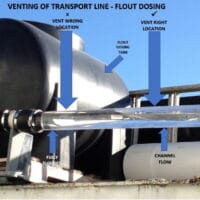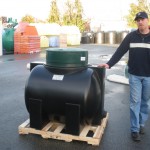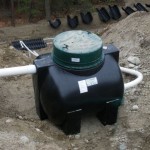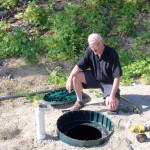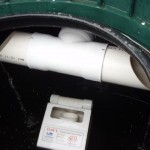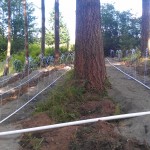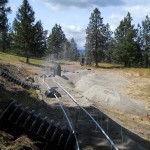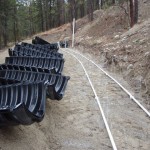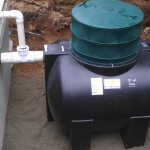Download Centre
-
TERRACED DRAIN FIELDS - SELF BALANCING
TERRACED DRAIN FIELDS – SELF BALANCING
Please click on the link below to access a pdf file:
Pressure Bubble Self Balancing
Or watch a short video showing the setup:
-
WELCOME TO PREMIER PLASTICS INC. (video 3 min.)
WELCOME TO PREMIER PLASTICS INC. (video 3 min.)
Please watch our video above “Welcome to Premier Plastics”.
Thanks to Sustainability Television – [email protected] -
CHEMICAL RESISTANCE TABLE (pdf)
CHEMICAL RESISTANCE TABLE (pdf)
-
CSA CERTIFICATION - SEPTIC TANKS (pdf)
CSA CERTIFICATION – SEPTIC TANKS (pdf)
-
CSA/NSF CERTIFICATION - WATER TANKS (pdf)
CSA/NSF CERTIFICATION – WATER TANKS (pdf)
-
CERTIFICATION - WASHINGTON STATE SEPTIC TANKS (pdf)
CERTIFICATION – WASHINGTON STATE SEPTIC TANKS (pdf)
-
ENVIRO-SEPTIC TREATMENT TECHNICAL DATA
Designer’s Worksheet
-
ENVIRO-SEPTIC CERTIFICATIONS & MORE (pdf's)
NSF & BNQ Certifications, Compliance & More (pdf’s)
-
DEMAND STORAGE RETROFIT FOR LOW YIELD WELLS
DEMAND STORAGE RETROFIT FOR LOW YIELD WELLS (pdf)
-
FIND THE RIGHT TANK (text + pdf)
FIND THE RIGHT TANK FOR YOUR NEEDS
Premier Plastics Inc. manufactures CSA / NSF certified polyethylene water and septic tanks in a wide range of styles and sizes for you to choose from. To help you find what plastic tank suits your needs, we have outlined some basic points to consider when making a decision.
If there is something you are not sure about, ask a Premier Plastics Expert.ABOVE GROUND OR BELOW GROUND
Will the tank be placed above ground or be buried? Tanks for burial are ribbed or shaped to resist the pressure from the ground around it. Underground tanks are rated by the maximum depth of earth cover allowed over the top. Lightweight fill such as styrofoam boards of bark mulch could be used if the required depth is over the maximum (consult our factory).
The level of ground water, frost line, depth of bedrock, and backhoe access are also considerations when installing tanks underground. Above ground tanks are designed to withstand the pressure from the water sitting inside the tank.
Poly tanks must always be vented to atmosphere.SIZE OF TANK
Your actual tank size will be based on:
- Usage needs per day or month for household, gardening, car washing etc.
- Source of water and reliability of supply i.e. from rainwater, creek, well, water district or truck. The longer the period with no or reduced supply, the larger the tank must be to serve your needs during these times.
- The best location and space available for your tank. Also, how will you get the tank into place? Polyethylene tanks are bulky but are relatively light weight. As a very rough guide, for the purpose of handling, polyethylene tanks weigh approx. 0.2 lbs. per gallon depending on size. Do you have vehicular or marine access, steep slopes, planted areas, trees, pathways or outbuildings to consider?
- Your BUDGET. Can you plan on leave room for future expansion?
- The size of your home if you need a septic tank. Septic tanks in British Columbia are sized primarily by the number of bedrooms. Sizing in other jurisdictions may be by the number of bathrooms or number of people. A State or Provincially registered sanitarian, registered on- site wastewater professional or your local environmental health authority should be consulted when planning onsite sewage systems.
STYLE OF TANK
Each style of tank has its own best suited application:
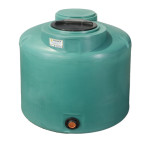
VERTICAL WATER TANKS
These tanks are vertical cylindrical in profile and are also the most commonly installed in the market place. Generally, these are the most economical in terms of dollars per gallon.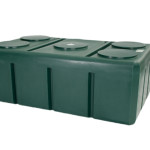
BOX TANKS
These tanks are for spaces with limited headroom such as crawlspaces and under decks. The low profile also allows moving into place through narrow openings. In tight spaces a floor panel could be installed above access lids. The tanks are designed to lay flat and not be placed on their side unless properly braced against bulging. Consult the factory if this is your only option.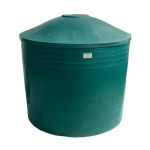 TAPER TANKS
TAPER TANKS
Used for applications that require completely open top access, such as fish rearing or chemical mixing. The tapered side allows multiple tanks to nest together for shipping economy.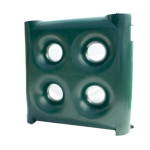 SLIMLINE TANKS
SLIMLINE TANKS
A specialized tank for very narrow vertical spaces (18” or 22” wide) or when clearance in front of the tank is limited. The ‘holes’ in the design prevent the sides from bulging when filled.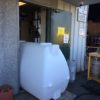 RAINDROP TANKS
RAINDROP TANKS
A slim, low profile tank for low headroom or narrow spaces –inside or outside space. Will pass through a 36”’ wide doorway. Uses include storage and re-pressurization of water supply from low yielding wells to regain flow rate during periods of peak demand during the day, rain water harvesting, and for standby storage to suppress small fires. CONE BOTTOM TANKS
CONE BOTTOM TANKS
Designed for sediment collection or granular material. The tanks require a steel/fiberglass floor stand for support.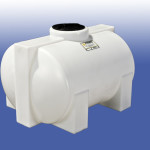 LEG TANKS
LEG TANKS
Leg tanks can provide the maximum storage volume in a rectangular low headroom space. They are also a convenient way to transport water by pickup truck or trailer from a public utility. Uses include spraying, pressure washing or portable fire suppression. The smaller sizes can be positioned crossways in a truck box to leave room for other equipment or supplies. Keep in mind the weight of the water you are transporting and the hazardous effect of water moving around a partially filled tank.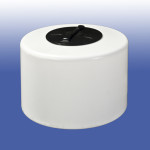 UTILITY TANKS
UTILITY TANKS
Utility tanks are vertical cylindrical in profile and are specifically designed for 30” or 36” door opening access. The larger sizes are used for standby fire suppression where there is no municipal supply.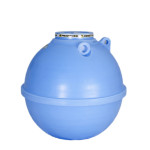 CISTERN TANKS
CISTERN TANKS
These are tanks installed below ground for water storage. There are a number of styles and sizes. These are SuperTanks, Saturna Tanks, Fat Albert Tanks, Submarine and Moonlander styles. Check the maximum bury depth for each size.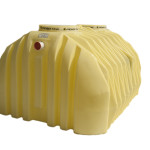 SEPTIC TANKS
SEPTIC TANKS
These tanks are designed for partial or below ground installation. Styles according to size are SuperTanks and Saturna Tanks. Styles of septic pump out tanks and trash tanks are SuperTanks, Saturna Tanks, Fat Albert Tanks, Submarine Tanks and Moonlander Tanks. Gravity powered septic ‘FLOUT’ dosing packages are installed in four sizes of heavy duty Leg Tanks. Check the maximum bury depth before making your selection.TANK COLOUR
Colour is used for esthetic or identification purposes. Vertical water tanks are either black or dark green. Some sizes are available in either colour. When used outside these colours are less noticeable and limit sunlight penetration. The natural polyethylene we use has a built in ultra-violet light stabilizer against sunlight. Most, smaller tank sizes are natural white. Typically, underground water tanks (cisterns) are blue, septic tanks are yellow. All pigments used (except yellow) are CSA/NSF certified for drinking water.
-
FLOUT AIR/WATER INTERACTION TESTS (pdf and videos)
FLOUT AIR/WATER INTERACTION TESTS (pdf and videos)
Self venting with smaller field: 0.46 min.
Separate Air Vent larger fields > 1.12 min.
Squirt height and residual head readings. Steady state trapped air in transport pipe > 1.42 min.
System drainout > 0.23 min.Squirt height and residual head readings > 0.55 min.
Shallow grade transport pipe. Trapped air limits residual head > 1.22 min.
Vented transport pipe purges air to deliver higher residual head > 0.09 min.
Flout Test Air Water Interaction May’2012 > 1.54 min. -
FLOUT DOSING PIPING AND PERFORMANCE
FLOUT DOSING PIPING AND PERFORMANCE
Dosing System Hook-up
Bypass air vent around septictank filter
Guidelines for use with GRAVITY 2017 Performance Program
Concept Diagram Data Inputs Type A
GRAVITY 2017 Worksheet ExampleFor access to the Live Application, please fill out the form below.
[gravityform id=”13″ title=”false” description=”false” ajax=”true”]
-
FLOUT PERFORMANCE GRAPHS AND TABLES (pdf)
FLOUT PERFORMANCE GRAPHS AND TABLES (pdfs)
Quick Reference Guide to Predict Orifice Squirt Height
Residual Head Required for Various Squirt Heights
Friction Head Loss for Various Pipe Sizes
Jobsite Feasibility Chart
Water Content in pipes – US Gallons
LT130 graph Flout Drawdown ExampleEffluent volume in dosing tanks – Gallons per inch graph
Canada
FLT130 Graph Flout
FLT175 Graph Flout
FLT230 Graph Flout (soon to come)
FLT380 Graph FloutUSA
FLTU155 Graph Flout
FLTU210 Graph Flout
FLTU215 Graph Flout (soon to come)
FLTU455 graph Flout -
FLOUT DOSING SYSTEM DISCUSSION (pdf)
FLOUT DOSING SYSTEM DISCUSSION (pdf)
The Flout Gravity Dosing Alternative (Rissy)
Understanding Air Behavior in the Flout Dosing System for Septic Fields
Flow Observations
General Effects of Transport Pipe Size
Flow Rate with Minimal Vertical Drop
Definitions – Septic Dosing Systems
Dual Diameter Transport Pipe (see Dosing System Hook-up) -
FLOUT DOSING SYSTEM PICTURES (jpg)
-
FLOUT DOSING SYSTEM PROJECTS (videos)
FLOUT DOSING SYSTEM PROJECTS (videos)
4 outlet Flout in Box Tank 0.55 min’
Terraced Pressure Dosing Nanaimo 1 – 1.23 minFlout Dosing Demo Video 1 52 sec
Flout Dosing Demo Video 2 80 sec
-
FLOUT DOSING TEST DATA AND DISCHARGE PROFILES (pdf)
FLOUT DOSING TEST RESULTS AND DISCHARGE PROFILES (pdfs)
Group1
Group1 3/16″ dia. Orifices 26″Drop – Transport 2″,3″,3″ Preflooded
Group1 Test Data Summary
40 Orifices
60 Orifices
80 Orifices
100 Orifices
120 OrificesGroup2
Group2 1/8″ dia. Orifices 10.5′ Drop – Transport 3′,3″/2″,4″/2″
Group2 Test Data Summary
40 Orifices
60 Orifices
80 Orifices
100 Orifices
120 OrificesGroup3
Group3 3/16″ dia. Orifices 10.5′ Drop – Transport 4″/2″,4’/2″Vented,4″/2″Preflooded
Group3 Test Data Summary
40 Orifices
60 Orifices
80 Orifices
100 Orifices
120 OrificesGroup4
Group4 3/16″ dia. Orifices 10.5′ Drop – Transport 2″,4″/2″,3″
Group4 Test Data Summary
40 Orifices
60 Orifices
80 Orifices
100 Orifices
120 OrificesGroup5
Group5 3/16″ dia. Orifices 10.5′ Drop – Transport 3″,3″Vented,3″Preflooded
Test Data Summary
40 Orifices
60 Orifices
80 Orifices
100 Orifices
120 OrificesGroup6
Group6 3/16″ dia. Orifices 10.5′ Drop – Transport 3″/2″,3/2″”Vented,3/2″”Preflooded
Group6 Test Data Summary
40 Orifices
60 Orifices
80 Orifices
100 Orifices
120 Orifices -
FLOUT DOSING TESTIMONIALS (pdf)
FLOUT DOSING TESTIMONIALS (pdf)
-
INSTALLATION - ABOVE GROUND TANKS
Installation – Above Ground Tanks
Above Ground Plastic Tank Installation
WHAT BASE IS REQUIRED?
- A firm, level base that is continuous under the entire tank is required.
- Base can be sand, fine gravel, clean dirt, cement or properly supported and closely placed planks.
- Pebbles larger than half inch should be removed.
- Ensure the tank has not settled and remains vertical after filling.
CAN A PLATFORM BE USED?
Yes, however, the tank bottom must be continuously supported, e.g. with two layers of ¾ inch plywood nailed to a suitable support structure. In the interest of safety, an engineer should be consulted.
NOTE – Weight of water is 8.33 pounds per US gallon or 10 pounds per Canadian gallonHOW HEAVY ARE THE TANKS?
- For a rough guide, the weight of above ground tanks is obtained by taking the gallon size and dividing by five. E.g., a 1000 gallon tank will weight approximately 200lb.
- For underground tanks, take the gallon size and divide by three.
ARE THEY EASY TO HANDLE?
- All tanks can be moved by pick-up truck or trailer.
- Polyethylene is a very resilient material and damage is unlikely to occur during careful handling and transportation.
- Extra care must be taken in extreme cold weather because the tank will be harder and more brittle.
CAN I PUT PRESSURE IN THE TANK?
NO! Polyethylene tanks must be open to atmosphere or vented at all times. They can be used to provide a head of water by mounting at a higher elevation but cannot be subjected to any external pressure source. Use a float valve on the inlet if necessary.
WHAT ABOUT ALGAE GROWTH?
Algae growth is promoted by light penetration into the tank. Algae growth can be reduced by locating the tank away from sunlight and choosing a darker tank colour and by disinfection.
CAN THE TANKS BE BURIED?
- Tanks are manufactured specifically for either above ground or below ground use.
- Above ground tanks have smooth sides and are for ground level mounting only. They can, however, be dropped into the ground to a depth of 20% of the tank height to reduce the above ground profile.
WHAT FITTINGS COME WITH THE TANK?
- Most above ground water tanks are fitted with a 1 inch or 2 inch female threaded pipe connection at the bottom and a 16 inch access cap at the top. Access caps have breather valves that let air in
and out as the water level changes. Your local plumber or plumbing store can help you with
making the proper connections. - Check that bulkhead drain/outlet fittings are tight onto the tank. The lock nut on the fittings has a reverse thread to prevent it coming loose when tightening external connections.
- To prevent risk of stripping, hand tighten threads several turns to make sure threads are lined up. Check for leaks when the tank is filled and tighten just enough to stop any leaks. Excessive tightening may strip the pipe threads or crack the bulkhead fittings which will then have to be replaced.
- Additional connections for inlet pipes are added separately to customer requirements.
- For approximate pipe sizing refer to Pipe Sizing Chart.
DOES SUNLIGHT AFFECT THE TANKS?
- Over time, exposure to sunlight causes the plastic to harden which makes it more prone to cracking if the tank receives a heavy blow.
- All Premier Plastics tanks are impregnated with an ultraviolet inhibitor that slows this hardening effect.
- Darker colour or black tanks will generally last longer.
WHAT ABOUT COLLECTING RAIN WATER?
- Collecting rainwater is an excellent way to bridge periods of short water supply.
- A filter basket should be used to screen out leaves, twigs, and debris coming from the eaves troughs.
- Water for drinking, cooking, and dish-washing must of course be boiled or disinfected.
- Clean rainwater can be used for large volume uses such as toilet flushes, laundry, showers, washing vehicles, and watering the garden.
- Water levels can be checked using a ‘Pneumatic Dipstick’ level gauge from Premier Plastics.
HOW LONG IS THE WARRANTY?
- All above ground tanks carry an eight year warranty, however, you can expect many more years of service.
- All underground water tanks and septic tanks carry a ten year warranty. Polyethylene will virtually last forever underground.
- Complete the warranty form and return to Premier Plastics Inc.
ARE THE TANKS SAFE FOR DRINKING WATER?
- YES – tanks are manufactured from food grade polyethylene and meet specifications contained in FDA regulations 21 CFR 177.1520(c)3.1, NSF Standard 61 and CSA 6861-05.
- Maintaining the quality of water in the tank is of course your responsibility. Information on water quality can be obtained from water supply companies, well drillers, or public health departments. Factory tanks are clean but not disinfected.
- Small particles of polyethylene may be found in the bottom of a new tank. These occur when cutting holes for fittings, and will float to the surface when filled or can be vacuumed out.
WILL I NOTICE A DIFFERENCE IN TASTE?
- To keep the water fresh, your piping should be connected so that incoming water is always flushing through the tank.
- Water that has been sitting in any type of vented container for a period of time will develop a ‘flat’ taste. This is because air in the water has been lost. This can be partly overcome by half filling a closed vessel and shaking it vigorously to put air back in.
HOW WILL A STORAGE TANK HELP A SLOW PRODUCING WELL?
- Many people are experiencing reduced flow rate from their wells. Well pumps are usually sized water “on demand”, i.e. If your bathtub fills at 5 gallons a minute then the well must produce water at 5 gallons a minute for the time the bath is running.
- A storage tank allows short periods of high demand to come from the tank and not directly from the well.
- A family using 400 gallons per day would need their well to produce no more than 400 gallons over 24 hours if a storage tank is used. On average, a well needs only to produce half a gallon a minute every minute for 24 hours to supply the family.
- A common practice is to dump a truckload of water down a slow producing well. If water deliveries were put into a storage tank no loss from seepage would occur, resulting in cost savings.
- Sizing and system layout can be obtained from your local well driller.
WHAT HAPPENS IF MY TANK FREEZES?
- It is unlikely that a partially full tank will split. The walls will swell under the pressure of ice. A tank will start to freeze only during extended periods of cold weather.
- Piping should be protected or drained during freezing weather because the smaller volume of water in the piping will freeze more readily and may split the pipe. Refer to a contractor familiar with these conditions.
- If freezing is a concern, the tank can be insulated with a waterproof insulation or put in an insulated shed.
- An underground tank offers the best protection from freezing. It will also keep the water cool in the summer.
-
INSTALLATION - UNDERGROUND TANKS (pdf)
Installation – Underground Tanks (pdf)
-
PARTICLE SETTLING RATES IN STILL WATER (pdf)
Particle Settling Rates in still water (pdf)
-
PIPE SIZING FOR FLOW FROM ELEVATED WATER TANKS (pdf)
PIPE SIZING FOR FLOW FROM ELEVATED WATER TANKS (pdf)
-
PROGRAMS - FLOUT DOSING / PUMP SIZING / RAIN STORAGE (pdf)
EXCEL PROGRAMS – FLOUT DOSING / PUMP SIZING / RAIN STORAGE (pdf)– All Easy to Use, Very Fast and no Fees.
GRAVITY 2017
Performance Evaluation for ‘FLOUT’ Gravity Powered Pressure Septic Fields. (Type A)
Graphic Introduction Sheet
Guideline for use
Sample WorksheetQUICKSTEP 2017
Effluent Pump Sizing for Septic Fields Elevated Above Level of Septic System. (Type B)
Graphic Introduction Sheet
Guideline and Sample WorksheetRAIN TANK
Storage Tank Size Optimization for Rain Water Harvesting Systems. Includes Monthly Weather Data.
Graphic Introduction Sheet
Rainwater Tank Sizing Example
Guideline and Sample Worksheet Year CAN
Guideline and sample worksheet Year USTo have a Live Application sent to you, please fill out the form below.
-
PUMP CHAMBER DRAWDOWN CAPACITIES (pdf)
Pump Chamber Drawdown Capacities US Gallons (pdf)
Pump Chamber Drawdown Capacities Imp. Gallons (pdf)
-
SCROLODEX - PRODUCT LISTING (pdf for cell phones)
SCROLODEX – PRODUCT LISTING
Convenient link to our product listing (pdf document) for quick & easy reference:
On your cell phone, create a quick link to the CAN SCROLODEX PRODUCT LISTING or the US SCROLODEX PRODUCT LISTING page or download to file.
-
TESTIMONIALS - SEPTIC AND WATERTANKS (text + pdf)
TESTIMONIALS – SEPTIC AND WATERTANKS
-
TRUCKLOAD FREIGHT ESTIMATOR (Excel, pdf)
Truckload Freight Estimator – US
Truckload Freight Estimator – CAN

